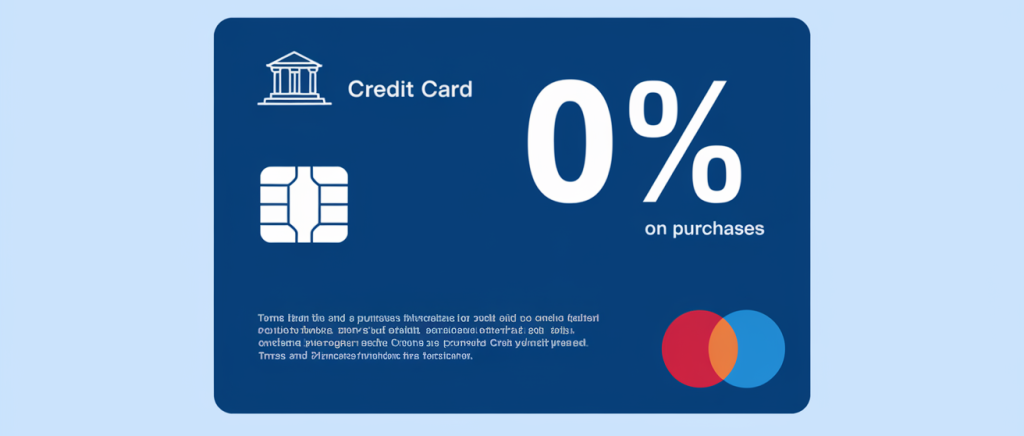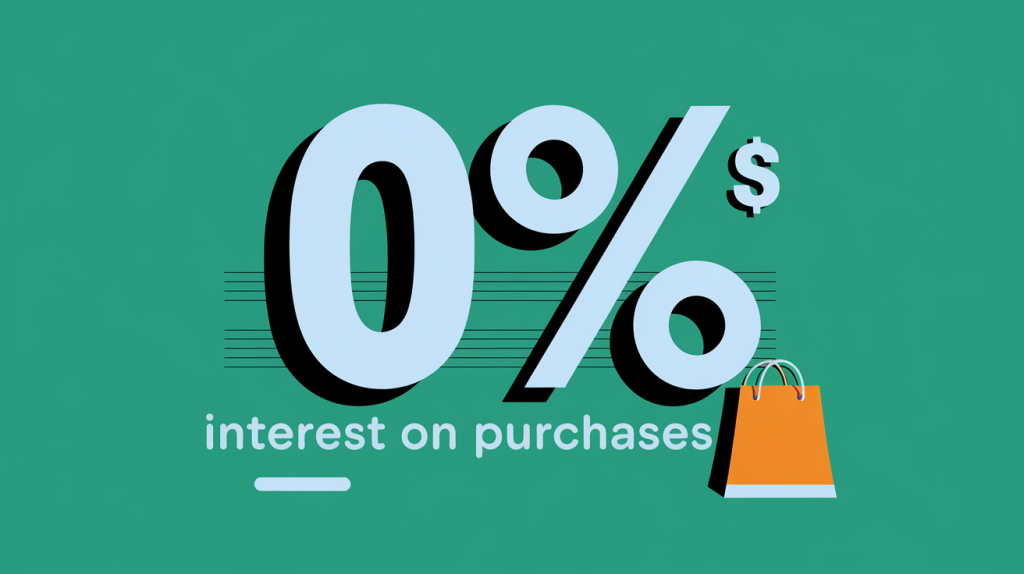0 interest on purchases credit cards let you buy things without paying extra fees for a set time. In 2025, these cards are still popular, but they come with rules you need to understand. This article explains how they work, why they’re useful, and how to avoid mistakes that could cost you money.
Table of Contents
- What Are 0 Interest on Purchases Credit Cards?
- How Do These Cards Work?
- Benefits of 0 Interest Credit Cards
- Risks of 0 Interest Credit Cards
- How to Qualify for a 0 Interest Credit Card
- Tips for Using 0 Interest Credit Cards
- What If You Can’t Pay Off the Balance?
- Smart Ways to Use 0 Interest Credit Cards
- Are These Cards Right for Everyone?
- The Future of 0 Interest Credit Cards
What Are 0 Interest on Purchases Credit Cards?
A 0 interest on purchases credit card is a type of credit card that charges no interest on your purchases for a certain period. This period is called the “introductory period” and usually lasts 12 to 18 months. For example, if you buy a $1,000 laptop with this card and pay it off within the 0% period, you won’t pay any extra interest. But if you don’t pay it off in time, the card will start charging interest on whatever’s left.
How Do These Cards Work?
These cards became popular in the early 2000s as banks tried to attract new customers. By 2025, they are still common, but banks have made some changes. Many now require higher credit scores to qualify, and some charge annual fees. The 0% period also varies; some cards offer 15 months, others only 6. It’s important to read the terms carefully before signing up.
Benefits of 0 Interest Credit Cards
One big benefit of 0% interest on purchases credit cards is saving money on big buys. Let’s say you need a new fridge that costs 2,000. With a regular credit card charging 20% interest, you’d pay around 400 a year if you didn’t pay it off. But with a 0% card, you could spread payments over 12 months without extra costs. This makes it easier to manage your budget.
Another benefit is improving your credit score. If you use the card responsibly -like paying on time and keeping your balance low- it can boost your credit history. This helps if you want to apply for a loan or mortgage later. However, if you miss payments or max out the card, your score could drop.

Risks of 0 Interest Credit Cards
After the 0% period ends, the card’s interest rate (called APR) jumps to a high number, often 20% or more. If you still owe money, you will start paying interest on the full balance. For example, if you owe 1,000 when the 0% period ends, you could pay around 200 a year in interest. Some cards even charge deferred interest, which means if you don’t pay the full balance by the deadline, you’ll owe interest on the entire original amount.
To avoid surprises, always check the card’s APR and fine print. Some cards also have hidden fees, like balance transfer fees or late payment penalties. In 2025, banks must clearly explain these terms by law, but it’s still up to you to read them.
How to Qualify for a 0 Interest Credit Card
How do you qualify for a 0 interest on purchases credit card? Most banks look for good to excellent credit scores (670 or higher). If your score is lower, you might not get approved, or you might get a shorter 0% period. Younger adults or people new to credit may have a harder time qualifying. Secured credit cards or student cards are better options for building credit first.
Tips for Using 0 Interest Credit Cards
Once you get the card, plan how to use it. Make a list of what you need to buy and stick to it. Avoid using the card for small daily purchases like coffee or snacks: this can add up fast. Instead, focus on one big purchase or emergency expense. Set up automatic payments to avoid missing deadlines.
What If You Can’t Pay Off the Balance?
What happens if you can not pay off the balance in time? Some banks let you transfer the debt to another 0% card, but this usually costs a fee (3-5% of the balance). Another option is to ask for a payment plan. In 2025, many banks offer flexible options due to new consumer protection laws.
Smart Ways to Use 0 Interest Credit Cards
In recent years, 0 interest on purchases credit cards have also become tools for smart shoppers. For example, some people use them to buy holiday gifts in November, pay them off by February, and avoid interest. Others use them for home repairs or medical bills. The key is to have a clear payoff plan.
Are These Cards Right for Everyone?
Are these cards right for everyone? Not exactly. If you are not disciplined with payments, the high APR after the 0% period can trap you in debt. But if you’re organized and good at budgeting, they can be a helpful financial tool.
The Future of No Interest Credit Cards
Looking ahead, experts predict no interest on purchases credit cards will stay popular in 2025 and beyond. Banks might offer longer introductory periods to compete, but stricter rules could make them harder to get. New laws may also limit hidden fees, making these cards safer for consumers.
FAQs
What happens when the 0% period ends?
After the introductory period, the card’s regular APR (often 20% or higher) applies to any remaining balance. If you still owe money, you’ll start paying interest.
Can I lose the 0% offer if I miss a payment?
Yes. Most banks cancel the 0% deal if you’re late on a payment, and you’ll owe interest immediately.
Do all 0 interest credit cards work the same way?
No. Some charge deferred interest, while others don’t. Always read the terms to understand fees, deadlines, and APR rules.


